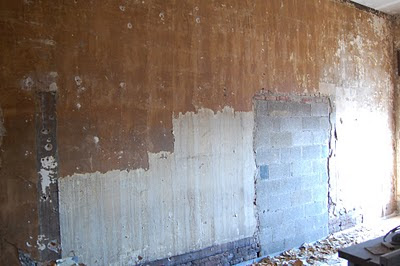In the article, he mentions the amusing comment of a noted 2 stroke tuner describing the 2 stroke GP bike as a racehorse and the Moto2 bike as a donkey, and further alludes to the displeasure of racing 'purists' who "suspect the new class to be at the thin end of the wedge - the transformation of a once elitist sport into a form of low-brow entertainment, a motorsport Gladiators, a two-wheeled NASCAR."
This is not the first time that NASCAR has been used as a negative example of what a high level racing series can turn into, but with all due respect to Mr. Oxley, this kind of negative association could not be more misguided, at least as it relates to motorcycle racing. We should be so lucky as to have high level motorcycle racing classes like MotoGP that mimic the rules set of NASCAR. In fact, a NASCAR-like rules set is something that the top MotoGP riders have been publicly wishing, in vain, that the sport could return to. How is that, you say? Well, here is what NASCAR has that every MotoGP rider, fan, journalist, EVERYONE, except for the factories, wishes the class had:
1) Cable operated mechanical throttle
2) Larger displacement than anything that is available to the public in the same platform
With just these 2 things, cable throttle and large engine displacement, the list of 'non criticals' becomes much less relevant, and it is no accident that these are things that racers, fans and journalists are NOT excited by, which I suspect no one would miss if their impact was greatly reduced:
First, electronics - without engine control module (ECM) access to the throttle plates and with large engine displacement, the level of control authority given over to electronics becomes much less, because the 'air' part of the air/fuel ratio cannot be regulated by the ECM, it can only be regulated by the riders' right wrist. With only fuel and spark timing able to be controlled, and with the very fat torque curve of a large displacement engine, development of both the engine and chassis will need to focus primarily on the relationship between mechanical grip and rider feel, without the bandaids afforded by allowing the computer to determine the optimum throttle angle (engine output) for the given situation, which might now depend on which corner of the track they're on, the lean angle, lateral/longitudinal accleration, gear selected, amount of relative front/rear wheelspeed, suspension travel(s), and fuel level. Oh, and almost forgot, throttle position.
Now of course we know that even getting rid of onboard sensors like wheel speed sensors and gyros, and with a cable throttle, a fuel injected bike can utilize a rate of change based control strategy to control wheelspin, but this level of ECM intrusion into rider controlled inputs is infinitely less intrusive than what is allowed now, where torque output is referenced to specific corner and lean angle. Further, while wheelspin is reduced, relative yaw (or slip angle), is still primarily rider controlled, and wheelie control is 100% rider.
Second, fuel capacity - when every bike on the grid can easily have too much power at every rpm, and with limited means of torque truncation due to the lack of electronic throttles, power output does not need to be artificially governed by restricting fuel capacity. Instead, power output, and the shape of that curve, would be functionally governed by rideabilty, traction and tire life. As on the Aprilia Cube MotoGP 990cc effort it may be possible to build a monster motor with huge output, but harnessing that power, making it rideable often means reducing the output, not because of the rules, but because the bike works better with less.
All of the top level riders, Rossi, Stoner, Hayden et al, have lamented the move to the small 800cc displacement and the increasing level of control authority given over to electronics. And for sure the most exciting racing from the 800cc era, with maybe a few laps where lead positions change, is nothing compared to the exciting racing from the 990cc era, where there were often mulitple lead changes in one lap, with those same leaders relegated to lower positions as tires wore. Today's MotoGP machines that depend so much on corner speed allow fewer chances for overtaking, deviation from the inch perfect line and giving up midcorner speed cannot be made up for with corner exit drive. As a result,we receive our reward in the racing, or lack thereof, that we see.
Ask any MotoGP rider whether they would prefer NASCAR like rules as propogated by the big OEM auto manufacturers with cable throttles and big engines, or the current motorcycle manufacturers (MSMA)/Dorna rules package, even with the rules limited return of the 1000's, and see if they regard NASCAR as a negative example of rules making. Colin Edwards certainly would have some expletives handy to explain what bikes like that would be like to ride. My bet is that Rossi on a Barilla sponsored 1200cc, carb and cable throttle powered 'Ducati', with Stoner and Lorenzo on essentially the same bikes except for their sponsors, would make for some exciting racing. Maybe I am a dumbed down NASCAR loving American but I make no excuses for my appreciation of seriously wide, gooey, and long black lines out of every corner...
The Aprilia Cube, when way too much is...way too much.



















































